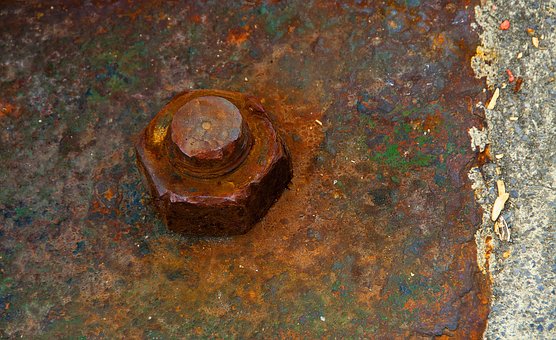Over time, screws made of metal can develop rust. This is due to a process called oxidation, in which the screw’s exposure to moisture causes it to corrode. If you need to remove a rusted screw, there are a few methods you can try. The best method will depend on the severity of the rust and the type of screw you’re dealing with.
1. Start by using a screwdriver to remove any loose rust from the screw. If the screw is very rusty, you may need to use a wire brush or sandpaper to remove all of the rust.
2. Once the rust has been removed, try using a screws extractor. This is a tool that is specifically designed to remove screws. To use one, first drill a small hole into the center of the screw. Then, insert the extractor into the hole and turn it in the opposite direction of how you would turn a screwdriver.
3. If you don’t have a screws extractor, you can try using pliers or vice grips. Place the jaws of the tool around the head of the screw and turn in the opposite direction of how you would turn a screwdriver.
4. As a last resort, you can try using a drill to remove the screw. First, drill a hole into the center of the screw. Then, insert the drill bit into the hole and turn it in the opposite direction of how you would turn a screwdriver.
Remember, rust makes screws harder to remove. So, be patient and take your time when removing a rusted screw. With a little effort, you should be able to remove even the most stubborn screws.
How To Remove Rusted Screws Using A Wire Brush
Removing rusted screws can be a difficult task, but it’s not impossible. In this article, we will show you four methods how to remove them using a wire brush. We will also provide some tips on how to make the process easier for you. Let’s get started!
The first thing you need to do is remove any dirt or debris that may be on the screw. This will make it easier for the wire brush to grip the screw. Next, place the wire brush on the top of the screw and twist it clockwise. You should feel the brush start to remove the rust. Continue twisting until the rust is gone and the screw is loose.
If the screw is still tight, you can try using a small amount of WD-40 or a similar product. Spray a little onto the screw and let it sit for a few minutes. The WD-40 will help loosen the rust so you can remove the screw easily.
Another method you can try is using vinegar. Soak a cloth in vinegar and wrap it around the screw. Let it sit for an hour or so before removing the cloth and trying to remove the screw again. The vinegar will have loosened the rust so that you can remove the screw easily.
If you’re still having trouble removing the screw, you may need to resort to using a power drill. First, make sure you have a drill bit that is the same size as the screw. Next, place the drill bit on top of the screw and start drilling slowly. As you drill, apply pressure to the screw so that it doesn’t spin out of control. Once the screw is loose, remove it from the metal surface.
With these four methods, you should be able to remove any rusted screw from a metal surface. Remember to take your time and be patient, as some screws may be more difficult to remove than others. With a little elbow grease, you’ll have that screw removed in no time!
If you found this article helpful, be sure to check out our other articles on home improvement and repairs! We have tons of great tips and tricks that can help you with all sorts of projects around the house. Thanks for reading!
Conclusion:
Rusting screws can be frustrating, but fortunately, there are several methods you can try to remove them yourself without having to call in a professional. The best method will depend on how badly rusted the screws are and what type of screws they are. Give one of these methods a try next time you find yourself dealing with rusty screws!
You may also like the following:
How To Clean Oil Off An Engine In Three Easy Steps
How To Polish Your Car In 5 Easy Steps

